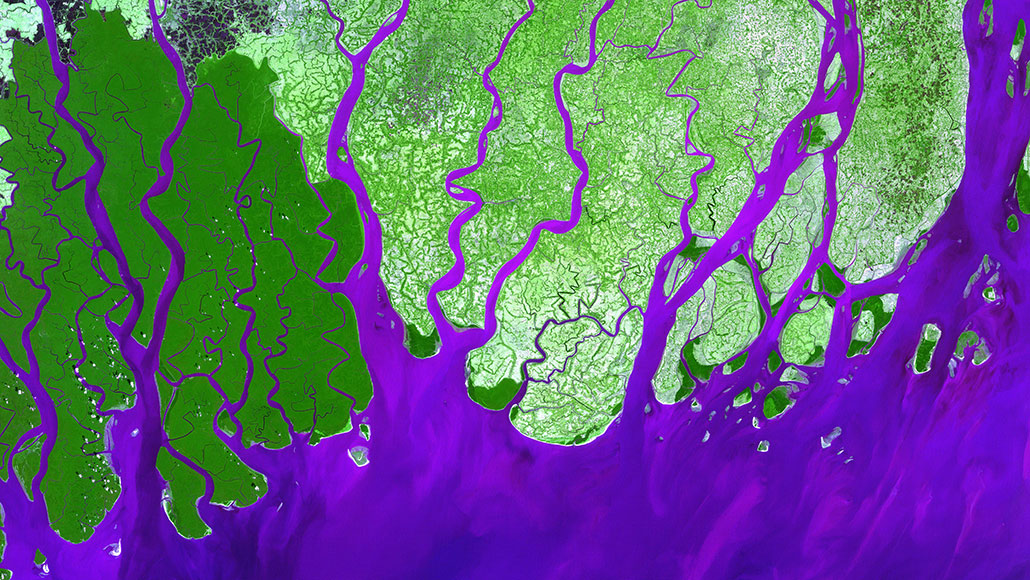Fed by human-caused erosion, many river deltas are growing
Deforestation and river damming are changing the shape of these landforms around the globe

Deltas along the Ganges River in India (shown) grew by about 4.9 square kilometers per year from 1985 to 2015. Soil erosion due to deforestation helped increase the amount of sediment carried downstream by the river.
USGS EROS Data Center Satellite Systems Branch







